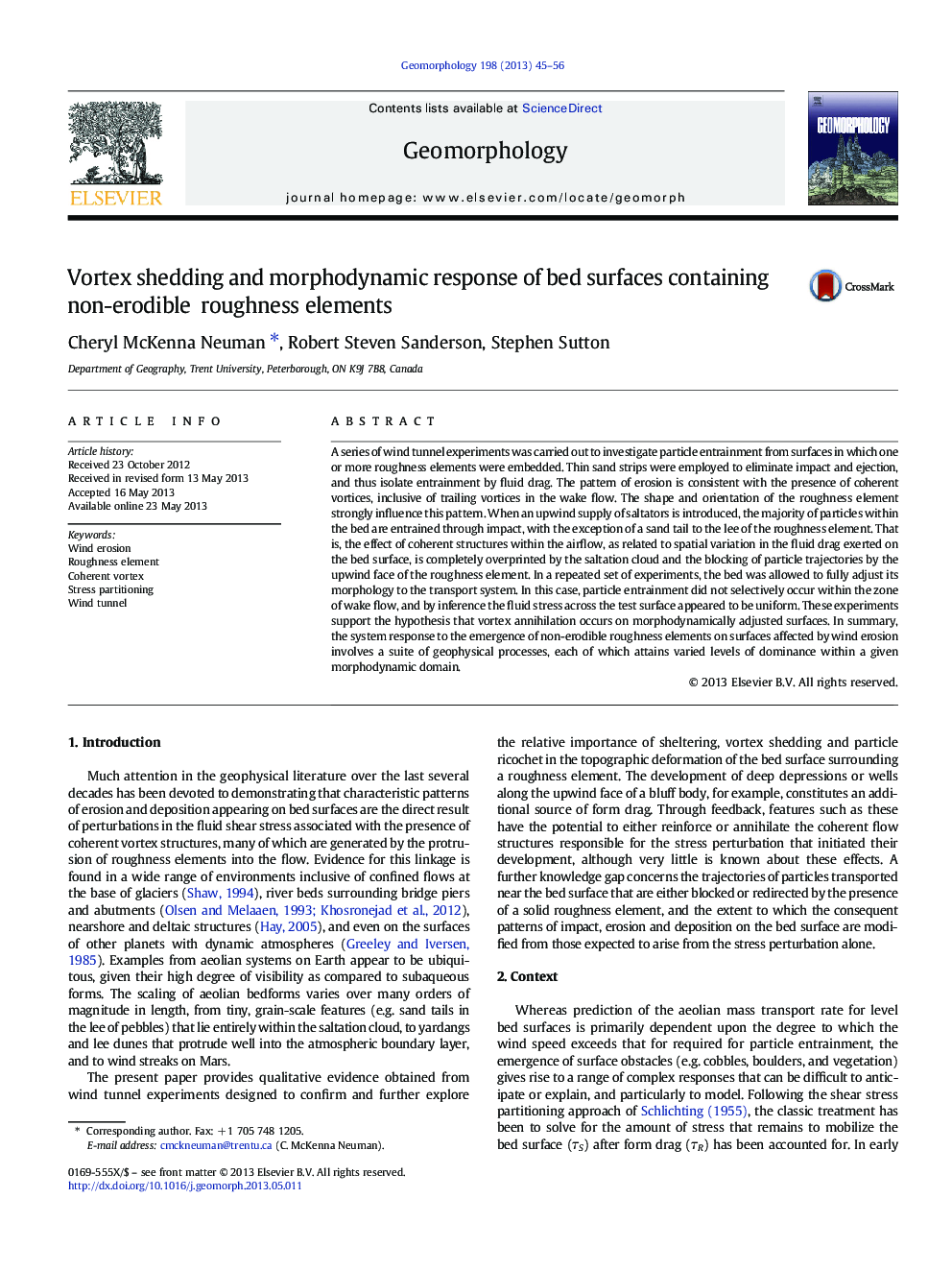| Article ID | Journal | Published Year | Pages | File Type |
|---|---|---|---|---|
| 4684742 | Geomorphology | 2013 | 12 Pages |
A series of wind tunnel experiments was carried out to investigate particle entrainment from surfaces in which one or more roughness elements were embedded. Thin sand strips were employed to eliminate impact and ejection, and thus isolate entrainment by fluid drag. The pattern of erosion is consistent with the presence of coherent vortices, inclusive of trailing vortices in the wake flow. The shape and orientation of the roughness element strongly influence this pattern. When an upwind supply of saltators is introduced, the majority of particles within the bed are entrained through impact, with the exception of a sand tail to the lee of the roughness element. That is, the effect of coherent structures within the airflow, as related to spatial variation in the fluid drag exerted on the bed surface, is completely overprinted by the saltation cloud and the blocking of particle trajectories by the upwind face of the roughness element. In a repeated set of experiments, the bed was allowed to fully adjust its morphology to the transport system. In this case, particle entrainment did not selectively occur within the zone of wake flow, and by inference the fluid stress across the test surface appeared to be uniform. These experiments support the hypothesis that vortex annihilation occurs on morphodynamically adjusted surfaces. In summary, the system response to the emergence of non-erodible roughness elements on surfaces affected by wind erosion involves a suite of geophysical processes, each of which attains varied levels of dominance within a given morphodynamic domain.
